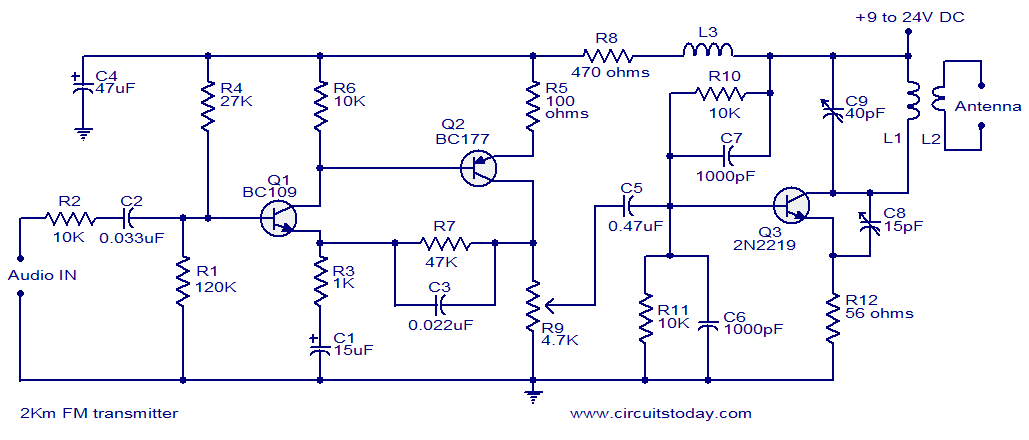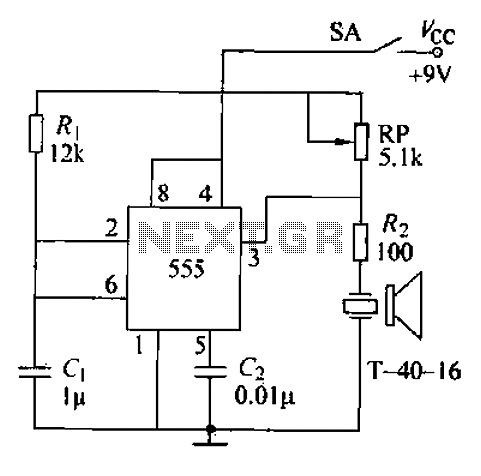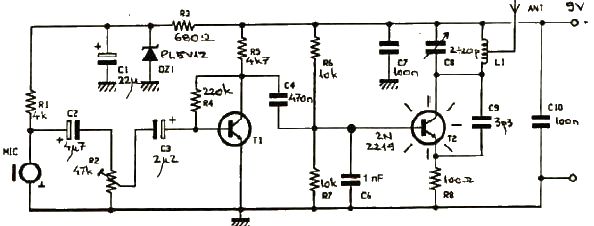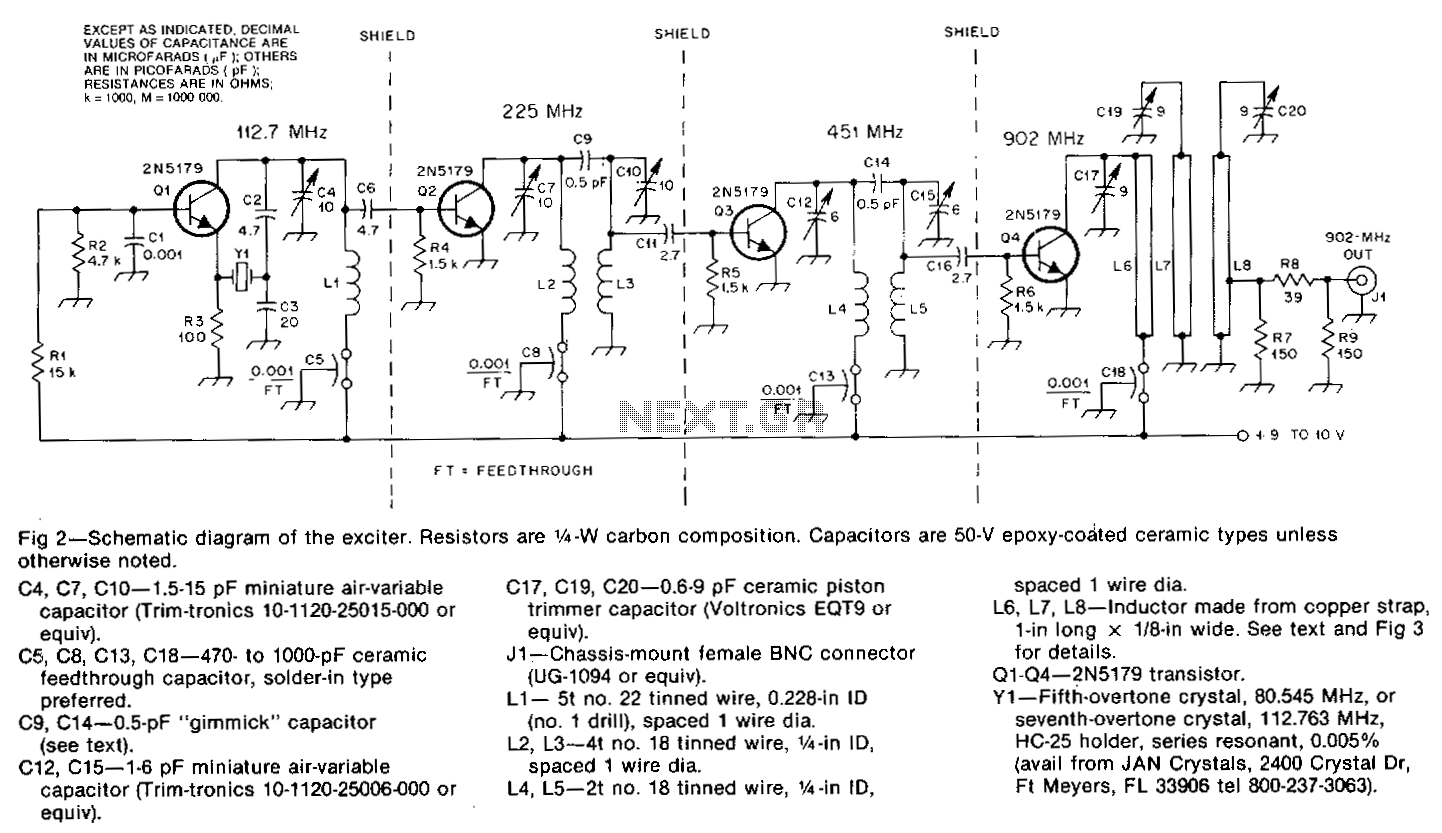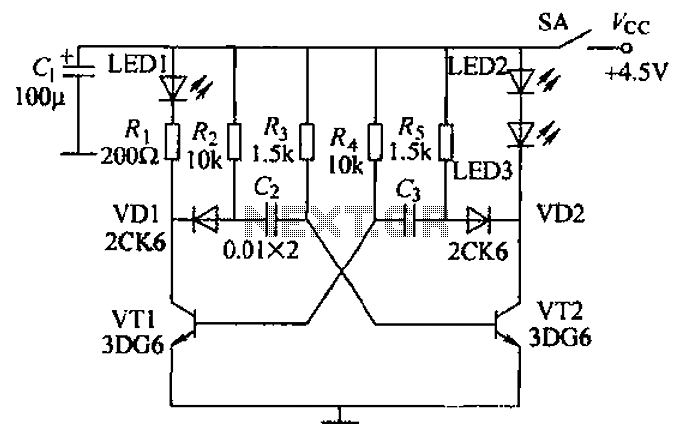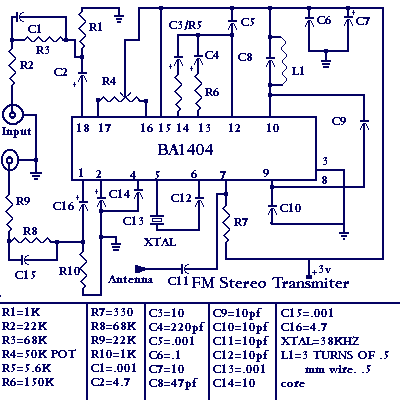
300m FM Transmitter
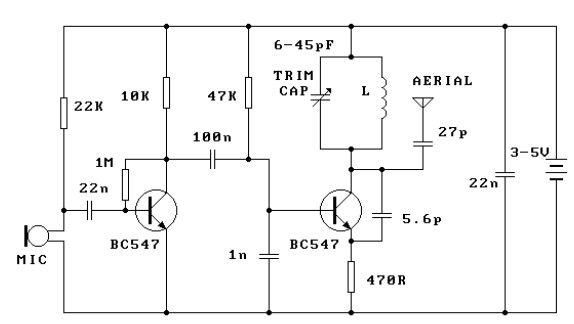
This FM transmitter circuit is simple and provides acceptable transmission. The signal transmitted from this FM transmitter circuit can be received at...
This FM transmitter circuit utilizes a few basic components to generate frequency-modulated signals suitable for short-range transmission. The primary components typically include a transistor, a variable capacitor, an inductor, and a power source, which together form an oscillator circuit. The oscillator generates a carrier wave at a specific frequency, modulated by the audio input signal, which can be derived from various sources such as a microphone or audio player.
The circuit operates by allowing the audio signal to vary the frequency of the carrier wave, which is then transmitted through an antenna. The antenna, often a simple wire, radiates the modulated signal into the surrounding area, where it can be picked up by standard FM receivers within the transmission range.
To enhance the performance of the transmitter, careful consideration should be given to the placement and tuning of the inductor and capacitor, as these components determine the operating frequency of the transmitter. Additionally, the power supply should be stable to ensure consistent operation.
A typical application for such a circuit includes personal broadcasting, where users can transmit audio content to nearby FM radios. It is crucial to note that legal restrictions may apply to the use of FM transmitters, and compliance with local regulations regarding transmission power and frequency usage is essential. The simplicity of the circuit makes it an excellent project for educational purposes, allowing individuals to gain hands-on experience in RF transmission and modulation techniques.This FM transmitter circuit is very simple and it has a acceptable transmission . The signal transited from this FM transmitter circuit can be received at.. 🔗 External reference
This FM transmitter circuit utilizes a few basic components to generate frequency-modulated signals suitable for short-range transmission. The primary components typically include a transistor, a variable capacitor, an inductor, and a power source, which together form an oscillator circuit. The oscillator generates a carrier wave at a specific frequency, modulated by the audio input signal, which can be derived from various sources such as a microphone or audio player.
The circuit operates by allowing the audio signal to vary the frequency of the carrier wave, which is then transmitted through an antenna. The antenna, often a simple wire, radiates the modulated signal into the surrounding area, where it can be picked up by standard FM receivers within the transmission range.
To enhance the performance of the transmitter, careful consideration should be given to the placement and tuning of the inductor and capacitor, as these components determine the operating frequency of the transmitter. Additionally, the power supply should be stable to ensure consistent operation.
A typical application for such a circuit includes personal broadcasting, where users can transmit audio content to nearby FM radios. It is crucial to note that legal restrictions may apply to the use of FM transmitters, and compliance with local regulations regarding transmission power and frequency usage is essential. The simplicity of the circuit makes it an excellent project for educational purposes, allowing individuals to gain hands-on experience in RF transmission and modulation techniques.This FM transmitter circuit is very simple and it has a acceptable transmission . The signal transited from this FM transmitter circuit can be received at.. 🔗 External reference
